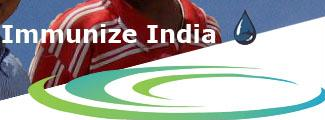What is rubella?
Rubella, sometimes called "German measles", is a disease caused by a virus. The infection is usually mild with fever and a rash. But, if a pregnant woman gets infected, the virus can cause serious birth defects.
Rubella is dangerous for a pregnant woman. If she gets rubella, she can have a miscarriage, or her baby could be born with certain birth defects.
What are the symptoms of rubella?
In children, rubella usually causes the following symptoms that last 2 or 3 days:
- Rash that starts on the face and spreads to the rest of the body
- Low fever (less than 101 degrees)
Before the rash appears, older children and adults may also have:
- Swollen glands
- Cold-like symptoms
- Aching joints (especially in young women)
About half of the people who get rubella do not have symptoms.
Is it serious?
Rubella is usually mild in children. Complications are not common, but they occur more often in adults. In rare cases, rubella can cause serious problems, including brain infections and bleeding problems.
Rubella is most dangerous for a pregnant woman’s unborn baby. Infection during pregnancy can cause miscarriage, or birth defects like deafness, blindness, intellectual disability, and heart defects. As many as 85 out of 100 babies born to mothers who had rubella in the first 3 months of pregnancy will have a birth defect. Hence the objective of vaccination against rubella is protection against congenital rubella syndrome (CRS). Developed countries have remarkably reduced the burden of CRS by universal immunization against rubella.
What are the risks associated with low coverage of rubella containing vaccines at national level?
It is essential that when immunization against rubella is instituted more than 80% coverage is achieved. Indiscriminate use of rubella vaccine (monovalent or as a constituent of MMR) in young children through public health measure with sub-optimal coverage of the target population may be counter-productive as it may shift the epidemiology of rubella to the right with more clinical cases occurring in young adults leading to paradoxical increase in cases of CRS. This has been shown to occur using mathematical models. Direct evidence from some Latin American countries and Greece also corroborates these concerns.
How serious is the burden of CRS in India?
There is paucity of reliable data on occurrence of CRS. WHO estimates that 100,000 cases of CRS occur in developing countries alone. Comprehensive evidence about the true burden of CRS in India is not available. However, Ministry of Health estimates that around 30,000 abnormal children are being born annually because of Rubella. Many experts, however, say the accurate figure would be around 200,000. The 2008 estimates suggest that the highest CRS burden is in South East Asia (approximately 48%), India being a major contributor, and Africa (approximately 38%). Other developing countries have incidence rates of 0.6-4.1 per 1000 live births. ). In 2012 and 2013 (till 31st May) India reported 28 and 48 rubella outbreaks. Cost benefit studies in countries with routine immunization coverage > 80% show that benefits of rubella vaccine outweigh the cost particularly when combined with measles vaccination.
How does rubella spread?
Rubella spreads when an infected person coughs or sneezes.
The disease is most contagious when the infected person has a rash. But it can spread up to 7 days before the rash appears. People without symptoms can still spread rubella.
Why should my child get the MMR vaccine?
The MMR shot:
- Protects your child from rubella, a potentially serious disease (and also protects against measles and mumps)
- Prevents your child from spreading rubella to a pregnant woman, whose unborn baby could develop serious birth defects or die if his mother gets rubella
- Prevents your child from getting a rash and fever from rubella
- Keeps your child from missing school or childcare (and keeps you from missing work to care for your sick child)
Is the MMR shot safe?
Yes. The MMR shot is very safe, and it is effective at preventing measles, mumps, and rubella. Vaccines, like any medicine, can have side effects. Most children who get the MMR shot have no side effects.
What are the side effects?
Most children don’t have any side effects from the shot. When side effects do occur, they are usually very mild, such as a fever or rash. More serious side effects are rare. These may include high fever that could cause a seizure (in about 1 out of every 3,000 people who get the shot) and temporary pain and stiffness in joints (mostly in teens and adults).
Is there a link between the MMR shot and autism?
No. Scientists in the United States and other countries have carefully studied the MMR shot. None has found a link between autism and the MMR shot.
Sources:
- Rubella and the Vaccine (Shot) to Prevent It. Available from: www.cdc.gov
- IAP Guidebook on Immunization 2013-14. Available from: www.iapindia.org
Last Updated : 10/01/2020
© Copyright 2015, All Rights Reserved by ACVIP. Powered by: ITindustries.com







